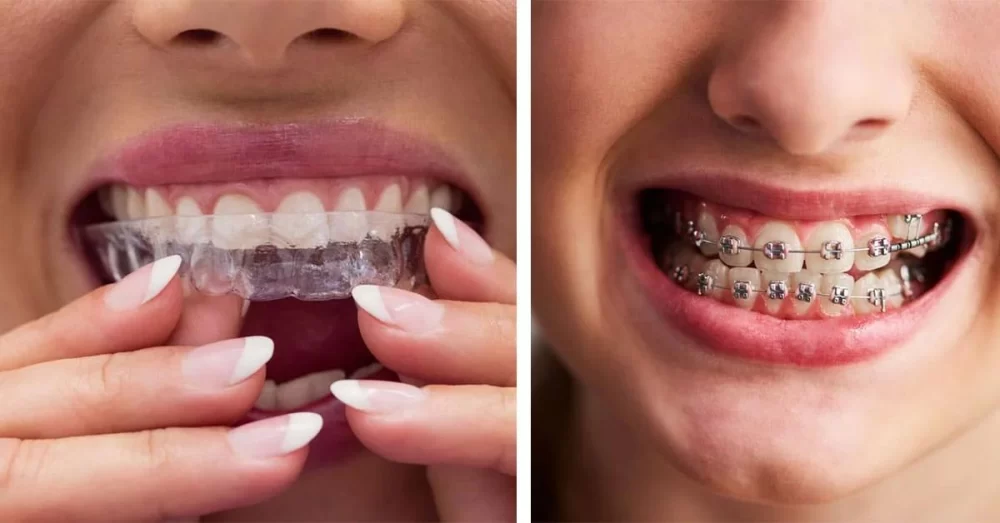
How to Choose Between Traditional Braces and Clear Aligners
When it comes to orthodontic treatment, the decision between traditional braces and clear aligners can feel overwhelming. Both options are designed to straighten teeth, but they come with their own sets of benefits and challenges. In this guide, I'll take you through everything you need to know to make the right choice for your dental health, personal preferences, and lifestyle.
1. Understanding Traditional Braces
Traditional braces have been around for decades, and they’re still a popular choice for many people seeking orthodontic treatment. These braces use metal brackets that are glued to your teeth and connected by wires. Over time, the wires are tightened to gradually move the teeth into the desired position. If you’re like many people, you may have had a friend or family member who wore traditional braces, and you probably noticed that the process can take anywhere from a few months to a few years.
Why Choose Traditional Braces?
Traditional braces are known for being highly effective for a wide range of dental issues. Whether you have severely crooked teeth, large gaps, or bite issues such as overbite or underbite, traditional braces can help correct these problems more efficiently in many cases. Traditional braces are also often recommended for younger patients whose mouths are still growing, as the braces can have a more significant impact on shaping the jawline.
Challenges with Traditional Braces
While traditional braces are highly effective, there are a few challenges that come with them. First, the appearance of metal braces can be a concern for many people, especially adults who feel self-conscious about the way they look. Additionally, traditional braces can be more difficult to maintain. Food particles can easily get stuck between the brackets, leading to the risk of cavities and gum problems if you don’t clean your braces thoroughly. Regular trips to the orthodontist for adjustments are also required, which can be time-consuming.
2. Exploring Clear Aligners
Clear aligners, such as Invisalign, are a newer and increasingly popular option for those seeking a more discreet method of straightening their teeth. These aligners are made from clear plastic trays that fit snugly over your teeth and are designed to be replaced every few weeks as your teeth gradually shift into place. Clear aligners are removable, meaning you can take them out when eating or drinking, making them a convenient option for many people.
The Appeal of Clear Aligners
One of the biggest advantages of clear aligners is their aesthetic appeal. Unlike traditional braces, they are virtually invisible, which makes them an ideal choice for adults and teenagers who may feel self-conscious about wearing braces. Another major benefit is the flexibility they offer. You can remove clear aligners when eating, drinking, or brushing your teeth, which makes it much easier to maintain good oral hygiene. Since there are no metal wires or brackets, clear aligners are also more comfortable, with fewer irritations to the inside of your mouth.
When Are Clear Aligners Not the Best Option?
Clear aligners are not the best option for everyone. If you have severe orthodontic issues, such as large gaps or significant bite problems, traditional braces might be a better choice. Additionally, clear aligners require a level of commitment to wearing them for at least 20-22 hours a day. If you tend to forget to put them back in or don’t wear them as recommended, your treatment may not be as effective. Clear aligners also require more discipline to avoid losing or damaging the trays.
3. Comparing the Two Options: Which One is Right for You?
Now that we’ve explored the advantages and challenges of both traditional braces and clear aligners, it’s time to consider which option is best for you. To make the right decision, it’s essential to think about your personal preferences, lifestyle, and the specific dental issues you’re looking to address.
Consider Your Aesthetic Preferences
If the appearance of your braces is a significant concern for you, clear aligners may be the way to go. They are discreet and nearly invisible, which makes them a more attractive option for many people. However, if you’re not particularly concerned about how your braces look or if you have more severe dental issues that require metal braces, traditional braces might be the better choice.
Think About Comfort and Maintenance
If comfort and ease of maintenance are important to you, clear aligners are likely to be more appealing. The absence of metal brackets and wires makes them much more comfortable to wear, and they are easier to clean. On the other hand, traditional braces require more care to avoid food buildup and staining, and they may be more likely to cause mouth sores or irritation in the early stages of treatment.
Evaluate Your Treatment Needs
If you have complex orthodontic issues that require extensive movement of your teeth or jaw, traditional braces might be necessary. Braces can tackle a wider range of problems and tend to deliver more dramatic results in cases of severe misalignment. However, if your dental issues are less severe and you want a more subtle treatment option, clear aligners could be a good fit.
4. Real-Life Experiences: A Journey Through Treatment
Many people have had unique experiences with both types of treatment. I remember when I was in high school, my best friend Sarah got traditional braces. At the time, she was pretty self-conscious about her smile, and the metal brackets and wires made her feel even more awkward. But over the course of her treatment, Sarah’s confidence grew as she saw her teeth straighten out, and by the end of her treatment, she had a beautiful smile she couldn’t stop showing off.
On the other hand, my cousin Alex decided to go with clear aligners when he wanted to fix his slight misalignment. He loved the fact that they were nearly invisible and that he didn’t have to worry about food getting stuck in his braces. He also appreciated that he could take them out to eat, which made things more convenient. Alex’s treatment was smooth, and he was thrilled with the results, which were just as effective as traditional braces for his needs.
5. Final Thoughts: Making the Right Choice for You
Choosing between traditional braces and clear aligners is a personal decision that depends on your unique needs and preferences. Both options offer effective results, but they come with different benefits and challenges. Take the time to discuss your options with your orthodontist to ensure that you choose the treatment that works best for you.
If you’re ready to take the next step in your orthodontic journey, visit Dentistry Toothtruth for expert guidance and recommendations on finding the right dental clinic or service tailored to your needs.







 Adelante Healthcare3.0 (831 review)
Adelante Healthcare3.0 (831 review) Affordable Dental at Flamingo & Sandhill4.0 (421 review)
Affordable Dental at Flamingo & Sandhill4.0 (421 review) Holistic Dental Wellness Center - Iman Abdeshahian, DMD4.0 (166 review)
Holistic Dental Wellness Center - Iman Abdeshahian, DMD4.0 (166 review) King of Prussia Dental Associates4.0 (113 review)
King of Prussia Dental Associates4.0 (113 review) Nanuet Family Dentistry: Dr. Srinivasa5.0 (2 review)
Nanuet Family Dentistry: Dr. Srinivasa5.0 (2 review) Slutsky Harold DMD4.0 (83 review)
Slutsky Harold DMD4.0 (83 review) The Importance of Oral Health Education During Pregnancy for a Healthy Pregnancy
The Importance of Oral Health Education During Pregnancy for a Healthy Pregnancy Best Tips for Brushing Your Teeth Properly for Healthy Gums: Essential Techniques for Oral Health
Best Tips for Brushing Your Teeth Properly for Healthy Gums: Essential Techniques for Oral Health Why Skipping Dental Checkups Can Lead to Bigger Oral Health Problems
Why Skipping Dental Checkups Can Lead to Bigger Oral Health Problems Advantages of Porcelain Dental Restorations
Advantages of Porcelain Dental Restorations How Can Diabetes Cause Tooth and Gum Problems? Preventing and Managing Oral Health Issues
How Can Diabetes Cause Tooth and Gum Problems? Preventing and Managing Oral Health Issues Healthy Habits for Promoting Good Oral Health and Hygiene: Tips for a Healthy Smile
Healthy Habits for Promoting Good Oral Health and Hygiene: Tips for a Healthy Smile